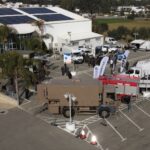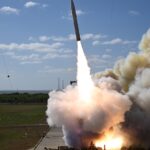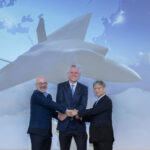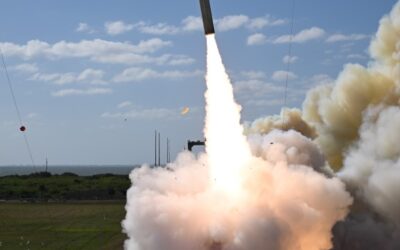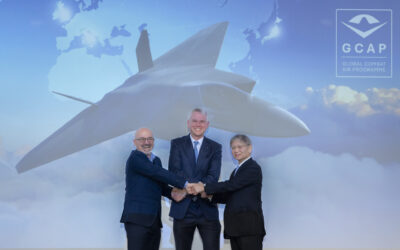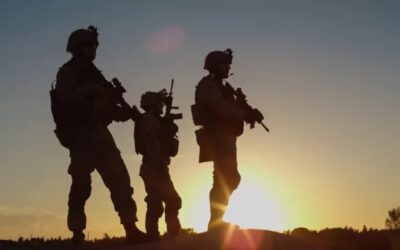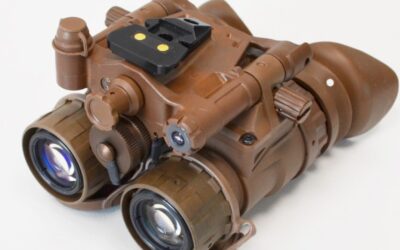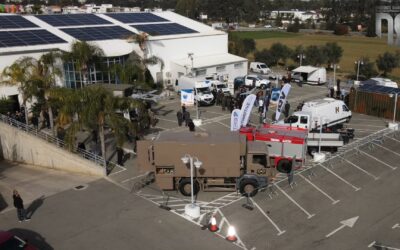The US Army has successfully conducted a test launch of its new hypersonic missile system, “Dark Eagle,” after two years of delays.

*Andreas Pogiatzis
The Ministry of Defence (MoD) and the National Guard General Staff (GEEF) will proceed with the replacement of the legacy weapon systems in the National Guard’s arsenal, according to the recent statement made by Defence Minister, Michalis Giorgallas. The statements were made on air during the “Face to Face” radio program of the Cyprus Broadcasting Channel 3rd Radio channel.
This statement comes amid various reports of Cyprus’ possible purchase of second-hand Israeli-made Merkava tanks, the procurement of other systems as well as additional Mistral-3 short-range anti-aircraft missiles.
Mr. Giorgallas also mentioned that within this framework, the Russian-made weapon systems that the National Guard possesses will also be withdrawn over a five-year period. However, we must assess the said report of the Minister as well as the available options and criteria for the replacement of a large number of weapon systems over a period of five years.
According to open sources, the National Guard has the following Russian-made systems:
- 82 T-80 U/UK Main Battle Tanks
- 43 BMP-3 Infantry Fighting Vehicles
- 8 BREM-80U Recovery vehicles
- 4 BM-21 Grad Multiple Rocket Launchers
- 11 Mil Mi-35P helicopters (Sold to Serbia)
- A number of BUK M1-2 medium-range self-propelled anti-aircraft systems
- 6 TOR-M1 Self-propelled short-range anti-aircraft systems
- A number of trucks and support vehicles for the above systems
It is not expected that the armament program of GEEF and the MoD will include the replacement of anti-tank and small weapons such as RPG launchers or AK-74 assault rifles, which can be replaced relatively easily.
In the first part of a two-part review, we will focus on options available to replace the Russian-origin Main Battle Tank and IFVs fleet of the National Guard.
Recently, there have been extensive online reports about the tank fleet of the Republic of Cyprus, while the shipment of 82 T-80 U/UK to Ukrainian Armed Forces is back on the agenda according to international news outlets.
The acquisition of any new tank must not be linked with the sale or delivery of the National Guard T-80s tanks to Ukraine, since the need to maintain a capable fleet of Main Battle Tanks was imperative for Cyprus long before the outbreak of the full scale war in Ukraine in 2022.
Also read: T-80U | 25 Years of service in the National Guard and its upgrade options – Infographics & VIDEO
In addition to the obstacles arising with regard to the immediate shipment of the Russian T-80s and/or BMP-3 Infantry Fighting Vehicles (IFVs) to Ukraine (i.e export license, replacement of each vehicle, logistics line of any new type, training of crews, etc.) it won’t be easy for the Republic of Cyprus to acquire a new fleet of (new) tanks in less than 5 years.
As is known from reliable sources, GEEF is already considering some options to replace, among others, the tank fleet of the National Guard (T-80U, AMX 30B2, EE-9 Cascavel). However, nothing is currently certain. Rather, it could be said that all discussions are merely exploring different scenarios at this stage.
Also read: OPINION | The future of the National Guard’s AMX-30B2 tanks – Withdrawal or Upgrade?
Based on geopolitical and economic data, the National Guard’s options for a new type of tanks (new or used) are limited to specific types inside or outside the European Union.
Tanks – Options for new or refurbished ones
Any relevant discussion must initially revolve around Europe’s main battle tank, the Leopard 2, as a choice for the National Guard, given the geopolitical shift of recent years towards the West and the European arms market.
 Leopard 2A7 of the German Army © KNDS
Leopard 2A7 of the German Army © KNDS
The cost of purchasing new Leopard 2A7s is now around 20+ million euros per piece, while total costs should include ammunition, personnel training as well as the possible logistics and other configurations that should be made on the battalions that will operate them. The installation of an active self-protect system (APS) to counter modern threats must now be considered imperative after the lessons learned in recent years, something that surely entails an extra cost.
Also read: APS “Trophy” | The system that now makes Abrams “indestructible” – Photos & VIDEO
The purchase of 82 or even 41 (a Battalion) of modern Leopard 2A7s will be costly for Cyprus, but it will fill a gap in tank potential for decades to come.
It is reported that Norway has recently purchased 54 Leopard 2A7 tanks with an option for another 18 worth 19.7 billion NOK (€1.67 billion i.e. €23+ million per tank including equipment). Deliveries are expected between 2026 – 2031.
Buying second-hand Leopard 2A4s could be considered provided that there are tanks of this type available, something highly uncertain due to the shipment of a number of those to Ukraine.
The advantages of the purchase of the Leopard 2A7 include the involvement of the European Defence Industry with emerging opportunities for the participation of the Cypriot Defence Industry, and transfer of know-how (logistics and training) by the Greek Army tο Cyprus. Further, the Republic of Cyprus will be strengthened at the level of diplomacy, since the country will practically support Germany with any small or large exchanges on the geopolitical map.
Rheinmetall’s futuristic tank KF-51 Panther with a 130 mm gun – which made its debut at Eurosatory 2022 – could also be considered.
 Panther KF51 main battle tank at the Eurosatory exhibition
Panther KF51 main battle tank at the Eurosatory exhibition
A few months ago, due to discussions on its sale in Ukraine, the said system was back on the agenda, but it is still unknown whether this scenario will be realized. The KF-51 Panther will almost certainly be more costly (there are no official cost figures) than the Leopard 2A7 due to its very advanced technological applications and corresponding advantages. You can read more about the tank in question and our presentation by Eurosatory in 2022 here. In this article, however, we do not include the KF-51 Panther as a potential option for the National Guard.
Also read: KF-51 Panther | Discussions on sending the most modern German main battle tank to Ukraine
Another similar option for consideration, again from Rheinmetall, is the well-known IFV Lynx KF-41 but with a 120 mm gun version (Lynx 120) which shares the same gun as the Leopard 2 (with some adjustments).
This platform is a Mechanized Fire Support Vehicle with a tank’s caliber gun. This version of the light tank combines high firepower, increased speed, and armor with low weight and dimensions smaller than a standard battle tank. The cost per unit is unknown, but it is not expected to cost less than the IFV Lynx KF-41, which was also proposed in Greece at a cost of around 11 million euros per unit.
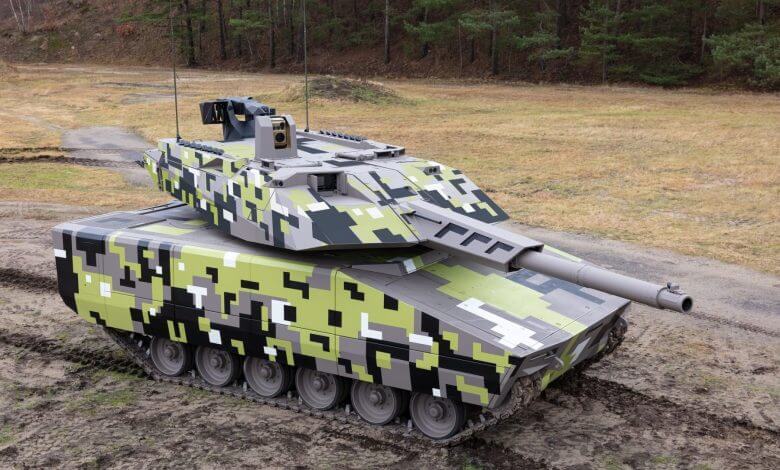 Lynx 120
Lynx 120
Another fire support platform could be the Italian wheeled vehicle Centauro II. The IVECO-OTO-Melara (CIO) joint venture vehicle is so far the world’s first 8×8 wheeled armored vehicle with a 120 mm high-pressure gun and is at the top of the Brazilian military’s list for the procurement of a new IFV fleet. The cost for the purchase (which could replace the EE-9 Cascavels instead of the T-80Us) is over €10 million per unit (2018 Italian Army prices).
Also read: Brazil | CENTAURO II fitted with 120 mm gun showcased in Italy
However, in the event that GEEF and the MoD consider options outside the EU for the purchase of new or used tanks, the discussion can revolve around the M1 ABRAMS, the K2 Black Panther of the South Korean Hyundai Rotem and the Israeli Merkava.
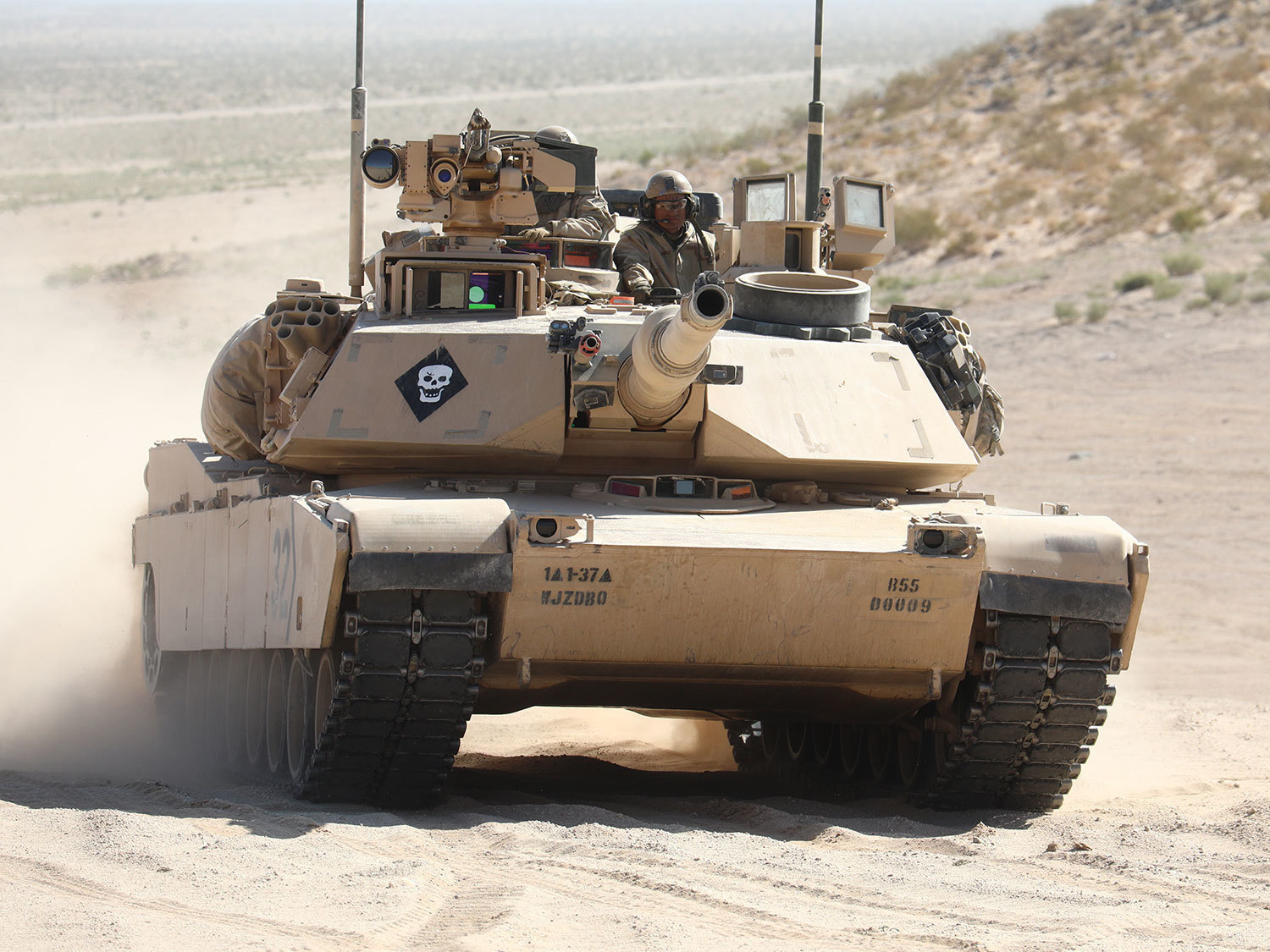 ABRAMS M1A2
ABRAMS M1A2
A possible purchase of a fleet of refurbished M1 ABRAMS (M1A2 version or newer e.g. SEPv3 on the Polish model) would substantially put Cyprus directly in a close US ally position, possibly unlocking the doors for more equipment from the United States.
Also read: US Army continues to modernize Abrams M1A2 tanks in SEPv3 version for $ 4.6 Billion – VIDEO
However, it must be taken into account that the ABRAMS is a heavy tank at 66+ tons compared to the 62 tons of the Leopard 2 and the 46 tons of the T-80U, which must be taken into account for its tactical use (agility) in the operational field of Cyprus.
The cost of buying used ABRAMS is not negligible since 250 refurbished ABRAMS M1A2 SEPv.3 for Poland cost 4.7 billion dollars or 18.8 million dollars per piece.
It is noted that the US is not currently manufacturing new ABRAMS M1 tanks, but it is refurbishing a number of them from its large stockpile. Last year the prototype of a lighter version of the ABRAMS, the AbramsX, was presented at the AUSA Defence and Security exhibition in the US. According to the manufacturer of ABRAMS, General Dynamics, the AbramsX will be the intermediate tank from the transition to ABRAMS SEPv3 and SEPv4 in a completely new generation.
Also read: General Dynamics | AbramsX Next Generation Main Battle Tank Breaks Cover – VIDEO & Photos
Regarding the K2 Black Panther, the National Guard may consider Poland’s example after the country went ahead with the purchase of 180 units of this type of tank at a total cost of $3.37 billion ($18.7 million / unit), while it intends to buy another 820 (1000 tanks in total). It is noted that the K2 Black Panther was nominated along with the Leopard 2A7 in the Norwegian competition, with the latter ultimately winning.
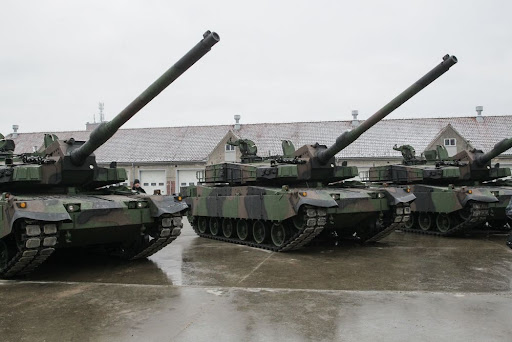 Polish K2 Black Panther
Polish K2 Black Panther
An important aspect that contributed to the selection of the tank for Poland is also the delivery time, since the first 22 tanks have already been delivered only a few months after the signing of the agreement in August 2022, while another 820 tanks are to be manufactured domestically with the formation of a joint venture between Polish Armaments Group (PGZ) and Hyundai Rotem.
The K2 Black Panther weighs 55 tons and its main armament is a CN08 120mm 55 caliber smoothbore gun designed by Hyundai Wia. South Korea’s Hyundai-Rotem also claims that the K2’s fire control system is the most modern and efficient in the world.
Another potential market, outside of the European Union, for the National Guard is that of our neighbor Israel, with whom we have been cooperating closely in many sectors, including Defence and Energy.
The State of Israel has never exported its national tank Merkava to any country, while recently, it was said that a large number of the stocks of these tanks might be exported to a European country.
Specifically, on June 14, 2023, Yair Koulas, head of the Directorate of International Defence Cooperation (SIBAT) of the Israeli Ministry of Defence, stated in an interview with an Israeli media outlet that “there are two possible countries with which we are conducting advanced negotiations for the sale of more than 200 Merkava tanks. I am not allowed to name them, but one is in the European continent.”
As already mentioned, the relevant statements triggered a big debate with fake news such as the fact that Cyprus gave Ukraine 41 T-80U tanks for free, amounting to 50% of the National Guard’s total tank fleet of this type.
Buying a used Merkava Mk III is probably the case with the lowest cost per unit, compared to buying another type of tank. According to open sources, the price of each Merkava Mk III can reach 4-5 million dollars, while Israel does not seem to be available to discuss the sale of newer versions of the tank (Merkava Mk IV).
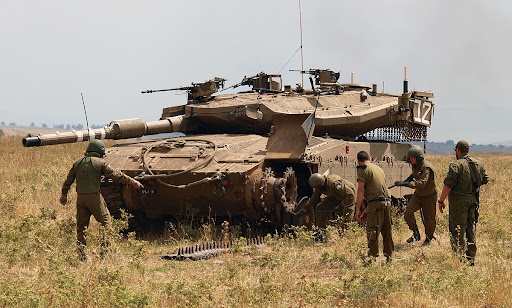 Caterpillar track change on a Merkava Mk III in the Golan Heights © Staselnik
Caterpillar track change on a Merkava Mk III in the Golan Heights © Staselnik
In any case, the replacement of the 82 T-80Us is not expected to take place soon and certainly not before any talks lead to concrete decisions.
The cost of purchasing 82 tanks of the new generation (Leopard 2 or K2 Black Panther) ranges, according to what we mentioned above, at some 20 million euros / unit [including Following On Support (FOS)], that is, 1,640 billion euros.
Accordingly, the cost to buy used 82 Merkava IIIs is about 410 million euros and the cost for 82 Abrams is about 1.5 billion dollars.
The announcements on spending on National Guard equipment amounting to 2% of GDP by President Christodoulidis equals to some 550-560 million euros per year in today’s figures. Over a 5-year period, this would amount to around 2.8 billion euros.
Furthermore, the need to replace the air defence systems and other means of Russian origin is also considered and will be analyzed in part II.
READ MORE
GCAP | Industry Partners Reached a Landmark Agreement to Deliver Next-Gen Combat Aircraft
BAE Systems (UK), Leonardo (Italy), and Japan Aircraft Industrial Enhancement Co Ltd (JAIEC) have reached an agreement to form a new…
Ukraine | Receipt of 1.2 Million Drones in 2024
The Ukrainian Ministry of Defence announced that it had supplied 1.2 million unmanned aerial vehicles to the Ukrainian army in 2024.
USA | The leader of the Islamic State was killed in an airstrike in Syria
The US military announced midday Friday that it had killed ISIS leader Abu Yusuf in an airstrike in Deir ez-Zor province.
THEON INTERNATIONAL | German parliament approves the exercise of the 3rd option of the OCCAR Night Vision contract
Theon International Plc (THEON) announces that the Defence and Budget Committees of the German Parliament approved yesterday a new…
BATTLEFIELD ReDEFiNED 2024 | The premier Defence and Security Conference Successfully Concludes in Cyprus – Photos
The International Defence and Security Conference “BATTLEFIELD ReDEFiNED 2024” was successfully concluded on Friday, 13, December 2024…
Dark Eagle | Successful Test of Hypersonic Missile by the US Army
The US Army has successfully conducted a test launch of its new hypersonic missile system, “Dark Eagle,” after two years of delays.
GCAP | Industry Partners Reached a Landmark Agreement to Deliver Next-Gen Combat Aircraft
BAE Systems (UK), Leonardo (Italy), and Japan Aircraft Industrial Enhancement Co Ltd (JAIEC) have reached an agreement to form a new…
Completion of the French-Hellenic Defence Innovation Symposium
On 12 and 13 December, 2024, the Hellenic Centre of Defence Innovation (HCDI) organised the first French-Hellenic Defence Innovation…










